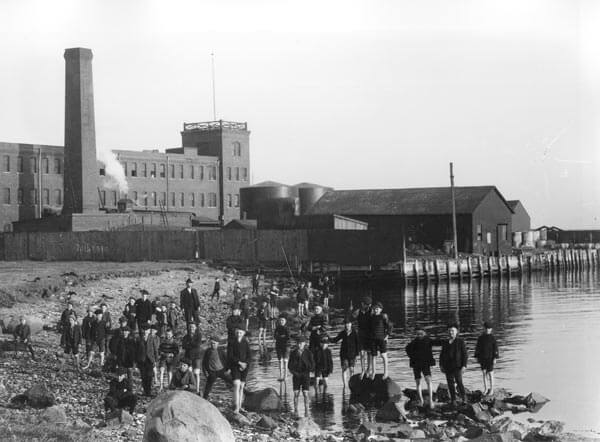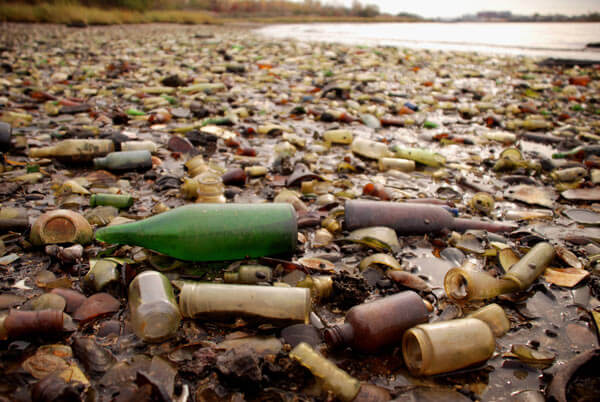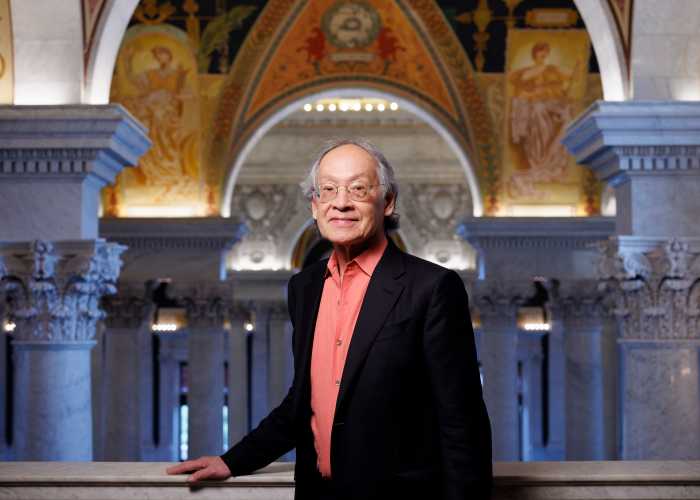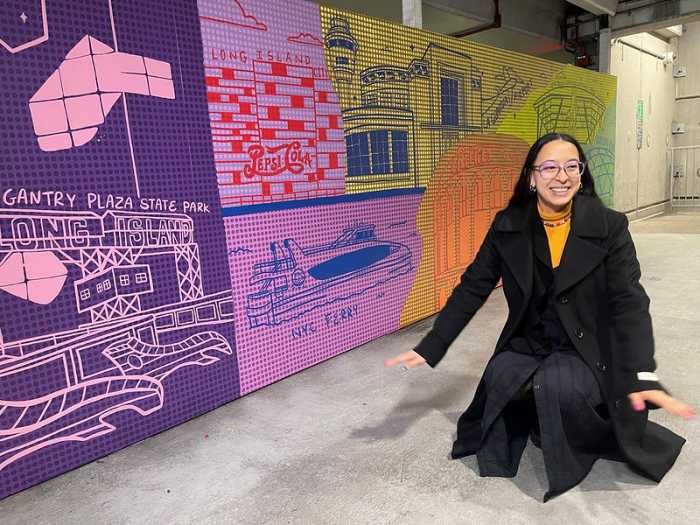By Kevin Zimmerman
The history of New York City’s waterfront includes both palatial summer homes and anonymous pine caskets buried in a potter’s field.
New York’s enormous coastline teems with inlets, barrier islands and marshy fields that all merge to help form the narrative of the city and its residents.
“It tells the story of New York; its industry, culture, immigration and food,” said Elizabeth Albert, assistant professor of Fine Arts at St. John’s University. “It’s all the things we care about in New York.”
What started as Albert’s research for a possible lesson has blossomed into “Silent Beaches, Untold Stories: New York City’s Forgotten Waterfront,” a mixed-media exhibit now at St. John’s Dr. M. T. Geoffrey Yeh Art Gallery.
The show includes historic photographs, prints, maps, drawings and films from such diverse places as the Rockaways, Newtown Creek, Staten Island and the Bronx. Each piece was created by a diverse group ranging from artists to government agencies.
Three years ago, Albert wandered through the Museum of Modern Art’s architecture and design galleries during a show where artists created a re-imagined New York City coastline. The following year, she stumbled upon Underwater New York, a website dedicated to art created around real objects discovered under the surface of the Hudson and East rivers and New York Harbor, including a complete skeleton of a giraffe found near the Verrazano Bridge.
As Albert spent time looking into the city’s waterfront, she quickly realized there was a lot about her hometown she knew nothing about. She also started to wonder what had occurred to change the way residents connect with the waterfront.
“So many places have gone from resort to neglected,” said Albert.
One such locale is part of what is now Gateway National Recreation and is the resting ground for bottles, bones and other items from a nearby landfill.
Albert said the landfill, capped in 1953, has been breached by decades of storms. Today, she said, when the tide comes in, it pulls more junk out and deposits it along the coastline.
Some of those objects are now part of the exhibit in a glass and wooden showcase. A 1920s rubber doll lies next to a rust-encrusted revolver.
Photos created by Nathan Kensinger show in great detail these beaches line with bottles from end to end.
Kensigner’s work is contemporary, with many images made in the aftermath of Hurricane Sandy, but Albert has also included plenty of historic views as well.
In a photograph from 1905, Jacob F. Weiners Jr. captures a group of children from the Bethlehem Orphanage standing on the water’s edge in College Point with the Chilton Paint Factory in the background.
Another image in the exhibit shows smartly dressed women in long skirts and men wearing straw boaters strolling the boardwalk in the Rockaways past the thriving commercial strip.
“Most of those old hotels are gone now,” said Albert. “This photo shows what the Rockaways once were and may be again.”
Other old photos detail a darker history of the city’s waterfront.
Nature in the form of twisting vines and overgrown trees has reclaimed North Brother Island, a 20-acre parcel near Rikers Island that once housed infectious disease patients including Typhoid Mary.
Mary Mallon was the first known healthy carrier of typhoid fever, which she spread through her work as a cook.
Eventually Mallon was confined to a small cottage on North Brother Island with only a dog for a companion. Officials later released her on the condition she never work as a cook again. However, after quickly disobeying the order, Mallon found herself back on the island where she remained until her death.
Death is also the main subject of Melinda Hunt and Joel Sternfeld’s images and films about Hart Island and its cemetery.
Four times a week, the city’s unclaimed dead are ferried across to this small island located where the East River meets Long Island Sound. Prisoners from Rikers bury these remains, placed in plain wooden boxes, in mass graves. The Department of Corrections estimates that 800,000 people are buried here.
Albert includes a diptych by Hunt that includes public records obtained through the Freedom of Information Act with images of prisoners performing a mass burial in February 1992.
For Albert, the Hart Island images sum up what she set out to accomplish with this exhibit: spark discussion about the importance of the waterfront to the city and its inhabitants.
“This started out just for my class, but I wanted other people to know,” said Albert. “This exhibition just scratches the surface. There is so much more.”
If you Go
Silent Beaches, Untold Stories: New York’s Forgotten Waterfront
Where: Dr. M. T. Geoffrey Yeh Art Gallery, St. John’s University, 8000 Utopia Parkway, Jamaica Estates
When: Through Nov. 9, Tuesday – Friday, 10 am – 5 pm; Saturday, Noon – 5 pm
Contact: (718) 990-7476







































